Trivia Browser
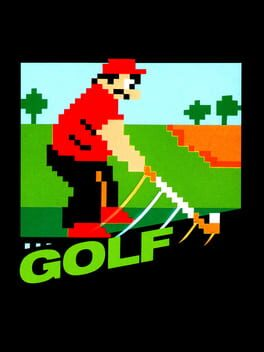
subdirectory_arrow_right Nintendo Switch (Platform)
▲
1
▼
Within the Nintendo Switch firmware prior to Version 4.0.0 (for Japanese, US and European systems only), there is a hidden NES emulator stub called "flog" that can only be unlocked on the Home Screen and when the console's internal clock is set to July 11th (if the date is changed in System Settings, but the console is connected to the internet and can see the actual date, this method will not work). The method to unlock it involves detaching the Joy-Cons from the console, holding them pointing forwards/downwards, then moving them to a vertical position and holding it for a few seconds. This gesture may take time to hone due to it being a specific movement tracked by the Joy-Cons, but when it is matched, the system will check to see if flog is installed. When checked, an audio clip of a man saying "chokusetsu" ("直接"), the Japanese word for "direct", will play and the screen will cut to black and launch the 1984 NES title Golf. This emulator is unique in that it includes instructions in English and Japanese on how to play depending on how the Joy-Cons are held, and has a more simplistic appearance than the emulators that would be used for Nintendo Switch Online. Pressing the Home button while playing Golf will return you to the Home Screen without any visible software running there.
With Version 4.0.0, Nintendo removed all of the code required to launch flog and play Golf, but the company seemed unusually hesitant to even acknowledge its existence when asked by news outlets. One month before its removal, Nintendo of America president Reggie Fils-Amie released two statements regarding it when asked by Kotaku:
While this seems to allude that the secret emulator and Golf's inclusion were not authorized, this all but confirms that their purpose was to act as a tribute to Nintendo's late CEO Satoru Iwata. Iwata, who programmed Golf and previously hosted the Nintendo Direct showcase series, passed away on July 11th, 2015, with the method to unlock the emulator mimicking a gesture he used during Nintendo Directs. Japanese fans on social media referred to the Easter egg as an "omamori", amulets that if kept close are said to protect the bearer and bring good luck, speculating that Golf was included by Iwata as a secret charm to watch over every Nintendo Switch unit after his death.
With Version 4.0.0, Nintendo removed all of the code required to launch flog and play Golf, but the company seemed unusually hesitant to even acknowledge its existence when asked by news outlets. One month before its removal, Nintendo of America president Reggie Fils-Amie released two statements regarding it when asked by Kotaku:
"So, two comments on this. It was identified by folks playing around in the firmware. We've got nothing officially to announce for that content or what the plans are for that content. So that's that. Certainly anything that pays respect to my friend Mr. Iwata is something that is near and dear to me personally, but in terms of that execution and what it was meant to do or what the plans are, we've got nothing to announce."
"I'm struck whenever I go back to Kyoto and spend time in our headquarters and spend time in the offices where Mr. Iwata, myself and others would be meeting. It's always personally touching. And so, again, no comment on that particular execution."
"I'm struck whenever I go back to Kyoto and spend time in our headquarters and spend time in the offices where Mr. Iwata, myself and others would be meeting. It's always personally touching. And so, again, no comment on that particular execution."
While this seems to allude that the secret emulator and Golf's inclusion were not authorized, this all but confirms that their purpose was to act as a tribute to Nintendo's late CEO Satoru Iwata. Iwata, who programmed Golf and previously hosted the Nintendo Direct showcase series, passed away on July 11th, 2015, with the method to unlock the emulator mimicking a gesture he used during Nintendo Directs. Japanese fans on social media referred to the Easter egg as an "omamori", amulets that if kept close are said to protect the bearer and bring good luck, speculating that Golf was included by Iwata as a secret charm to watch over every Nintendo Switch unit after his death.
Video demonstrations:
https://www.youtube.com/watch?v=CGN6QXv7sfs
https://www.youtube.com/watch?v=DmkAvnnFICE
Polygon articles covering the discovery and removal of Golf:
https://www.polygon.com/2017/9/17/16323452/nintendo-switch-golf-emulator
https://www.polygon.com/nintendo-switch/2017/9/20/16338508/nintendo-switch-golf-iwata-theory
https://www.polygon.com/2017/12/27/16822340/nintendo-switch-golf-game-hidden-removed
Reggie Fils-Amie statements:
https://kotaku.com/nintendo-is-still-oddly-tight-lipped-about-the-switch-s-1820050815
The Cutting Room Floor article:
https://tcrf.net/Nintendo_Switch#Golf
Chokusetsu definition:
https://en.wiktionary.org/wiki/ちょくせつ#Japanese
https://www.youtube.com/watch?v=CGN6QXv7sfs
https://www.youtube.com/watch?v=DmkAvnnFICE
Polygon articles covering the discovery and removal of Golf:
https://www.polygon.com/2017/9/17/16323452/nintendo-switch-golf-emulator
https://www.polygon.com/nintendo-switch/2017/9/20/16338508/nintendo-switch-golf-iwata-theory
https://www.polygon.com/2017/12/27/16822340/nintendo-switch-golf-game-hidden-removed
Reggie Fils-Amie statements:
https://kotaku.com/nintendo-is-still-oddly-tight-lipped-about-the-switch-s-1820050815
The Cutting Room Floor article:
https://tcrf.net/Nintendo_Switch#Golf
Chokusetsu definition:
https://en.wiktionary.org/wiki/ちょくせつ#Japanese
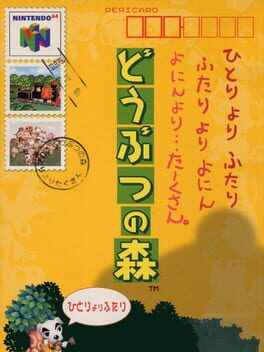
▲
3
▼
The source code for Doubutsu no Mori contains references to a variety of non-Nintendo Famicom ROMs that would not appear in the final game, including Arkanoid, F1 Circus, and most bizarrely, the bootleg port of Tekken 2 by Hummer Team.
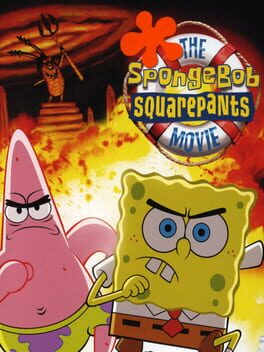
▲
1
▼
In 2012, The SpongeBob SquarePants Movie was ported to the PlayStation 3's PlayStation Network under the PlayStation 2 Classics line. However, it was taken down shortly afterwards with no official explanation. Audiences quickly inferred that the port's withdrawal was due to the poor reception it drew thanks to various emulation issues involved with it, though it may have also been due to THQ going bankrupt and Activision acquiring the license to make games based on Nickelodeon properties around the same time. Among these emulation issues, the 16:9 display (which was the default option) stretched the game rather than properly re-rendering it at a higher aspect ratio, the audio for in-engine cutscenes frequently stuttered and fell behind by up to a second, certain textures were noticeably blurry due to the game being displayed at a higher resolution than what it was designed for, and gameplay suffered from prominent input lag compared to the original release.
DidYouKnowGaming video:
https://www.youtube.com/watch?v=4CJoYsBRwrI
The Cutting Room Floor article:
https://tcrf.net/The_SpongeBob_SquarePants_Movie_(GameCube,_PlayStation_2,_Xbox)#PlayStation_3_Port
https://www.youtube.com/watch?v=4CJoYsBRwrI
The Cutting Room Floor article:
https://tcrf.net/The_SpongeBob_SquarePants_Movie_(GameCube,_PlayStation_2,_Xbox)#PlayStation_3_Port

subdirectory_arrow_right Pokémon Black Version 2 (Game), Pokémon White Version 2 (Game), Pokémon White Version (Game)
▲
1
▼
 When Pokémon Black 2 and Pokémon White 2 first released in Japan, fake leaks were posted on various websites claiming to be ROMs of the game, but in reality contained an FMV of a parody of the theme song to the Disney Channel series Cory in the House. The parody featured several of the games' characters and other memes at the time superimposed over the actors' heads, including talk show host Stephen Colbert, a caricature of the Pokémon fan website Serebii.net with a Trollface superimposed over it, and legacy Pokémon character Gary Oak. Before the title card of the show appears at the end, a barely visible screenshot of a post from the imageboard 4chan can be seen featuring the box art of the Nintendo DS game adaptation of the show, implying that the parody and fake ROMs originated from there. The video also features several scrolling text statements including:
When Pokémon Black 2 and Pokémon White 2 first released in Japan, fake leaks were posted on various websites claiming to be ROMs of the game, but in reality contained an FMV of a parody of the theme song to the Disney Channel series Cory in the House. The parody featured several of the games' characters and other memes at the time superimposed over the actors' heads, including talk show host Stephen Colbert, a caricature of the Pokémon fan website Serebii.net with a Trollface superimposed over it, and legacy Pokémon character Gary Oak. Before the title card of the show appears at the end, a barely visible screenshot of a post from the imageboard 4chan can be seen featuring the box art of the Nintendo DS game adaptation of the show, implying that the parody and fake ROMs originated from there. The video also features several scrolling text statements including:• "Amber killed Gary" - supposedly referring to an incident on 4chan's dedicated Pokémon board /vp/ starting on August 26, 2010 where several posters using Gary Oak and Mewtwo as avatars tried to "revive" or "kill" the anime-only character Amber from The Uncut Story of Mewtwo's Origin by trying to predict their post numbers in advance.
• "SHE IS BLACK ?!?" - referring to Pokémon Black & White Gym Leader Lenora.
• "GIANT HAIR EVERYWHERE" - on the following shot with four Bouffalants superimposed over Mount Rushmore.
• "FINAL GYM LEADER (IT HAS BEEN SEREBII CONFIRMED)" - referring to Iris, the last Gym Leader in Pokémon White and seems to be referring to leaks from the first Pokémon Black and Pokémon White games.
• "THIS FLOATING TEXT IS UP IN YO' SCREEN DAWG"
• "AMERICA" - on a shot of Stephen Colbert.
An upload of the fake ROM's FMV on YouTube dates back to September 16, 2010, two days before Pokemon Black & White's release date in Japan, and features several comments mentioning 4chan and /vp/ on top of the references in the video, suggesting that the hoax actually dates back to the release of the first Pokémon Black and Pokémon White, although discussion of this FMV from that time does not appear to have been preserved. While this ROM is also not known to be preserved (though its contents are), as recently as 2018 there have been reports of ROM dumps of Pokémon White 2 being silently modified to include Cory in the House references, including NPCs with dialogue featuring the lyrics to the show's theme song.
GBATemp forum thread from Pokémon Black & White 2's release discussing the Cory "leaks":
https://gbatemp.net/threads/pokemon-black-white-2-j-ot.325098/page-59
The Cory in the House FMV:
https://www.youtube.com/watch?v=DTcf2n7WODU
A documented Cory-related mod in Pokémon White 2:
https://www.realmeye.com/forum/t/pokemon-white-2-has-a-cory-in-the-house-reference/29349/6
Bulbapedia user article on /vp/ that seems to be the only archived text online explaining what "Amber killed Gary" even means:
https://bulbapedia.bulbagarden.net/wiki/User:The_Great_Butler//vp/#Notable_Creations
https://gbatemp.net/threads/pokemon-black-white-2-j-ot.325098/page-59
The Cory in the House FMV:
https://www.youtube.com/watch?v=DTcf2n7WODU
A documented Cory-related mod in Pokémon White 2:
https://www.realmeye.com/forum/t/pokemon-white-2-has-a-cory-in-the-house-reference/29349/6
Bulbapedia user article on /vp/ that seems to be the only archived text online explaining what "Amber killed Gary" even means:
https://bulbapedia.bulbagarden.net/wiki/User:The_Great_Butler//vp/#Notable_Creations
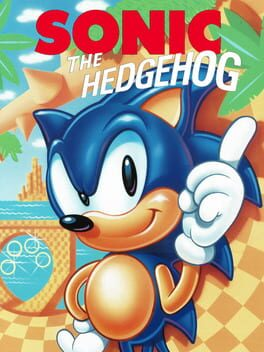
subdirectory_arrow_right Sega Smash Pack Volume 1 (Game)
▲
1
▼
 Sonic's graphic on the title screen of Sonic the Hedgehog has a belly that is obscured by the logo's ribbon. This is a leftover of the animatic of Sonic's appearance on the title screen. On earlier, less accurate emulators, including Sega's own emulator made for Sega Smash Pack Volume 1 on Dreamcast, a common error would involve Sonic's belly hanging over the ribbon.
Sonic's graphic on the title screen of Sonic the Hedgehog has a belly that is obscured by the logo's ribbon. This is a leftover of the animatic of Sonic's appearance on the title screen. On earlier, less accurate emulators, including Sega's own emulator made for Sega Smash Pack Volume 1 on Dreamcast, a common error would involve Sonic's belly hanging over the ribbon.

▲
1
▼
The file header (the game's name used as an introduction for its code) for Sonic the Hedgehog is supposed to have a line break in the middle, so it reads as:
However, this line break was done through spaces instead of an actual line break, so if one plays Sonic the Hedgehog on an emulator that shows the file header name (such as Kega Fusion), it will instead read:
[Note: periods added due to VGFacts automatically removing multiple rows of spaces.]
SONIC THE
HEDGEHOG
HEDGEHOG
However, this line break was done through spaces instead of an actual line break, so if one plays Sonic the Hedgehog on an emulator that shows the file header name (such as Kega Fusion), it will instead read:
SONIC THE...............HEDGEHOG
[Note: periods added due to VGFacts automatically removing multiple rows of spaces.]
Platform: ZX Spectrum
▲
2
▼
Warajevo was a ZX Spectrum emulator made in 1993 during the Bosnian War by Samir Ribic and Zeljko Juric. It was created in an attempt to provide nostalgia and escapism from the horrific circumstances they were surrounded by after the duo were disappointed by the Roman ZX emulator. The developers only had 2 to 3 hours a night to work on their emulator due to a low energy supply. Zeljko worked on the emulator at home, while Ribic worked on it at an army camp using a computer connected to a car battery. The latter computer would turn off whenever someone used the coffee machine, which eventually led to its hard disc being destroyed. At one point Ribic risked his life walking through a river bed while dodging bullets to find the last Spectrum pirate in his town, who lived in one of the most dangerous areas. The first version of the emulator would be released in 1994, one year before the war ended. Juric and Ribic would survive the war, and continue working on Warajevo after peace.
Story of Warajevo:
https://worldofspectrum.net/warajevo/Story.html
Roman ZX:
http://spectrum-zx.chat.ru/faq/emu_pc.html#ROMANZX
https://worldofspectrum.net/warajevo/Story.html
Roman ZX:
http://spectrum-zx.chat.ru/faq/emu_pc.html#ROMANZX

subdirectory_arrow_right Gran Turismo 2 (Game), Tekken 3 (Game), One (Game), PlayStation (Platform), Dreamcast (Platform), Xbox (Platform), PC (Microsoft Windows) (Platform), Sony Interactive Entertainment (Company)
▲
2
▼
 Bleem! was a PlayStation emulator released for Microsoft Windows 98 and the Sega Dreamcast. Unlike the vast majority of emulators before and since, it was released as a paid product on store shelves. Bleem!, although very impressive for the time and capable of running on low-end PCs, had many compatability issues, with the only game that ran perfectly on Windows Bleem! being the US version of One, while the only games that could be run at all on Dreamcast were Tekken 3, Metal Gear Solid, and Gran Turismo 2, all with specialised emulators released on their own "Bleemcast" discs.
Bleem! was a PlayStation emulator released for Microsoft Windows 98 and the Sega Dreamcast. Unlike the vast majority of emulators before and since, it was released as a paid product on store shelves. Bleem!, although very impressive for the time and capable of running on low-end PCs, had many compatability issues, with the only game that ran perfectly on Windows Bleem! being the US version of One, while the only games that could be run at all on Dreamcast were Tekken 3, Metal Gear Solid, and Gran Turismo 2, all with specialised emulators released on their own "Bleemcast" discs. Sony would sue Bleem! twice over alleged copyright infringement, and despite all odds, Sony lost due to Bleem!'s use of screenshots in promo material and the PS1 BIOS being protected by fair use. However, a mix of legal fees and Sony threatening retailers stocking Bleem! products with subpoenas would force Bleem! off of shelves anyway, and its website would be replaced with an image of Sonic the Hedgehog mourning at a grave with the Bleem! logo carved on it. Bleem! would countersue Sony for anti-competitive activity.
The popularity of Bleem! would lead both Sega and Microsoft to attempt to work with Bleem! officially to make PS1 games run on Dreamcast and Xbox, though these plans fell through due to Sega being afraid of Sony's litigation, while the developers of Bleem! simply felt Microsoft wasn't paying high enough for the license for Bleem! (something they had come to regret in the years since).
Video on Bleem! history:
https://www.youtube.com/watch?v=UGHul1PrXCE
Source of Bleem! collection photo:
https://www.reddit.com/r/gamecollecting/comments/dvf1ow/bleem_the_playstation_emulator_for_pcs_and/
Bleem! article:
https://www.eurogamer.net/the-history-of-bleem
Archived Bleem! page for One:
https://web.archive.org/web/20001109112400if_/http://bleem.com:80/
https://www.youtube.com/watch?v=UGHul1PrXCE
Source of Bleem! collection photo:
https://www.reddit.com/r/gamecollecting/comments/dvf1ow/bleem_the_playstation_emulator_for_pcs_and/
Bleem! article:
https://www.eurogamer.net/the-history-of-bleem
Archived Bleem! page for One:
https://web.archive.org/web/20001109112400if_/http://bleem.com:80/
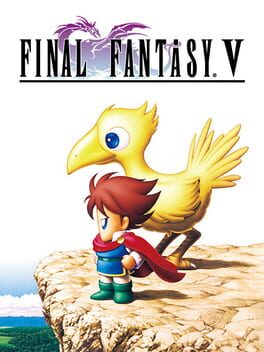
▲
5
▼
 The translation group RPGe's 1998 English translation of Final Fantasy V is considered to be one of the most widely-played and influential fan translations in video game history. It gained this reputation because it released before Squaresoft's first official translation in Final Fantasy Anthology in late 1999, and despite RPGe primarily consisting of inexperienced teenagers, it was regarded as a better translation than the official one, leading many Western players to first experience the game through it.
The translation group RPGe's 1998 English translation of Final Fantasy V is considered to be one of the most widely-played and influential fan translations in video game history. It gained this reputation because it released before Squaresoft's first official translation in Final Fantasy Anthology in late 1999, and despite RPGe primarily consisting of inexperienced teenagers, it was regarded as a better translation than the official one, leading many Western players to first experience the game through it.The first translation attempts stemmed from widespread confusion over Squaresoft not releasing three FF games in the West: Final Fantasy II, Final Fantasy III, and FFV. Their decision to release Final Fantasy VII internationally under its original numbering after Final Fantasy VI was released in the West a few years earlier as the "third" game in the series also contributed to this.
The co-creator of RPGe, named Shadow, was inspired by an incomplete FFII fan translation by users Demi and Som2freak (the latter having later lent Shadow tools to work on FFV), and started translating FFV by making flashcards for which hex code corresponded to each Japanese and English character in the game's data. He promoted his efforts online using photoshopped FFV images and recruited other users to create RPGe, including translator David Timko, and a computer engineering major named Hooie who also asked Japanese instructors at his university to help translate some enemy names. RPGe's plan was to directly edit their English script into the text files of a ROM of the Japanese version, but their work was slow and tedious due to them having little experience with fan translations and being out of touch with fledgling emulation communities. This led to technical issues with their text and sprite editing software, and English characters being poorly displayed under conditions that were originally designed for larger Japanese characters. The group also suffered from internal factionalism, and since Shadow promoted himself as the public face of the project, he found that he could not handle the attention and controversy that came from how seriously he took the project and RPGe itself, seeing the translation effort as a vital service to the Squaresoft fan community. After Demi published a lengthy post parodying Shadow, he "snapped" and left RPGe. The other founders of RPGe would also eventually step down, but other users would take over and start their own work.
A user named Myria, who had argued against RPGe's hex editing approach to no avail, split off from their efforts beforehand to work on a separate translation. Sharing similar setbacks to them, she gradually parsed through the code used to handle the text files, and edited it so it could recognize English characters of different sizes and fit more in a dialogue box. Som2freak helped translate the script for a time, but then left the project after bringing on a new editor, named harmony7, who started heavily revising Som2freak's translations to his chagrin despite seeing several issues with it.
One of the most controversial aspects of the translation was the main character's name. Squaresoft's later English translation named him "Bartz", but RPGe's translation named him "Butz", which many joked sounds like "butts". Myria claimed that Butz was the most accurate translation based on documents and official merchandise using it "the way we'd written it" (for reference, the Romanized version of the Japanese name "バッツ" comes out as "Battsu"). However, Butz is used in real life as an actual German surname with a different pronunciation, the vowel being an "oe" sound like in the English words "put" and "good". Therefore, Bartz would make more sense to match up with the vowels in the Japanese name than Butz, and also fits better as a German first name since Bartz is a pet name for Bartholomäus (Bartholomew).
The bulk of Myria's technical work ended in October 1997, with harmony7 still working to revise the entire script until something unexpected happened. An early version of the fan translation mysteriously appeared on a Geocities website with others taking credit for it. This prompted RPGe to release their work up to that point as "v0.96" on October 17, 1997, with the final patch eventually being released in June 1998. The translation patch received acclaim for its technical aspects and near-professional writing quality, and influenced other players to become translators, including Clyde Mandelin who would later create the English fan translation for Mother 3. Squaresoft never contacted RPGe about the translation, and while their 1999 translation of the game was seen as inferior to RPGe's, Myria would later opine that Square Enix's 2006 translation in Final Fantasy V: Advance was better than theirs. Myria continued hacking and reverse-engineering games and eventually earned a job at an undisclosed major video game company.
2017 Kotaku article:
https://web.archive.org/web/20170428183534/https://kotaku.com/how-three-kids-beat-the-odds-and-translated-final-fanta-1794628286
2021 IGN article:
https://web.archive.org/web/20210508152802/https://www.ign.com/articles/the-untold-drama-and-history-behind-final-fantasy-5s-fan-translation
Butz surname pronunciation:
https://en.wiktionary.org/wiki/Butz#Pronunciation_2
Bartz pet name source from Ancestry.com:
https://www.ancestry.com/name-origin?surname=bartz
Final Fantasy Chrome Figure Collection wiki articles:
https://finalfantasy.fandom.com/wiki/Final_Fantasy_Chrome_Figure_Collection
https://ffmerchandise.fandom.com/wiki/Final_Fantasy_Chrome_Figures_Collection
Ebay listing for Final Fantasy Chrome Figure set including Butz:
https://www.ebay.com/itm/275540207811
https://web.archive.org/web/20170428183534/https://kotaku.com/how-three-kids-beat-the-odds-and-translated-final-fanta-1794628286
2021 IGN article:
https://web.archive.org/web/20210508152802/https://www.ign.com/articles/the-untold-drama-and-history-behind-final-fantasy-5s-fan-translation
Butz surname pronunciation:
https://en.wiktionary.org/wiki/Butz#Pronunciation_2
Bartz pet name source from Ancestry.com:
https://www.ancestry.com/name-origin?surname=bartz
Final Fantasy Chrome Figure Collection wiki articles:
https://finalfantasy.fandom.com/wiki/Final_Fantasy_Chrome_Figure_Collection
https://ffmerchandise.fandom.com/wiki/Final_Fantasy_Chrome_Figures_Collection
Ebay listing for Final Fantasy Chrome Figure set including Butz:
https://www.ebay.com/itm/275540207811
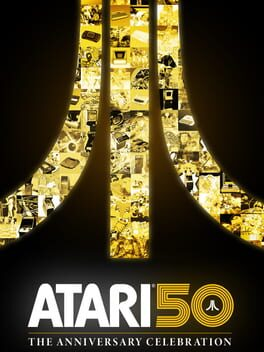
▲
1
▼
Work on an Atari ST emulator started during the development of Atari 50, but it was scrapped due to a lack of resources.
Platform: PlayStation
subdirectory_arrow_right Sega Master System/Mark III (Platform), Nintendo Entertainment System (Platform), Game Boy (Platform), Super Nintendo Entertainment System (Platform), Arcade (Platform), Sega Mega Drive/Genesis (Platform), Sega Game Gear (Platform), Game Boy Advance (Platform), Game Boy Color (Platform), Neo Geo AES (Platform)
▲
1
▼
 In 2018, rapper Soulja Boy attempted to sell his own line of video game consoles, collectively called the SouljaGame line, sold for $149.99 for a console and $99.99 for a handheld. Advertising claimed that the consoles would be compatible with a variety of consoles' games, including modern platforms like the PlayStation Vita, Nintendo 3DS, and Nintendo Switch. These, quite obviously, did not have such compatibility, but rather were a generic retro emulator console one could find on small business-oriented retail websites such as Wish and AliExpress loaded with pirated and modified games from the Neo Geo; NES; Game Boy Advance; Game Boy Color; Game Boy; Sega Genesis; SNES; Master System; Game Gear; and PlayStation libraries sold at a markup. The only difference from these pre-existing consoles being a photograph of Soulja printed onto the box. Soulja Boy would eventually stop selling SouljaGame consoles, with the website for the console redirecting to Nintendo's 3DS website.
In 2018, rapper Soulja Boy attempted to sell his own line of video game consoles, collectively called the SouljaGame line, sold for $149.99 for a console and $99.99 for a handheld. Advertising claimed that the consoles would be compatible with a variety of consoles' games, including modern platforms like the PlayStation Vita, Nintendo 3DS, and Nintendo Switch. These, quite obviously, did not have such compatibility, but rather were a generic retro emulator console one could find on small business-oriented retail websites such as Wish and AliExpress loaded with pirated and modified games from the Neo Geo; NES; Game Boy Advance; Game Boy Color; Game Boy; Sega Genesis; SNES; Master System; Game Gear; and PlayStation libraries sold at a markup. The only difference from these pre-existing consoles being a photograph of Soulja printed onto the box. Soulja Boy would eventually stop selling SouljaGame consoles, with the website for the console redirecting to Nintendo's 3DS website.
Soulja Boy selling SouljaGame line article:
https://variety.com/2018/gaming/news/soulja-boy-selling-cheap-consoles-1203084022/
Soulja Boy ends sales of SouljaGame line article:
https://www.ign.com/articles/2019/01/02/soulja-boy-stops-selling-souljagame-game-consoles
SouljaGame unboxing and teardown showing the packaging:
https://www.youtube.com/watch?v=fo-qNU7Qu3k
Rerez video reviewing the console SouljaGame was based on, showing the console list:
https://www.youtube.com/watch?v=ZqXuAuTFXpA#t=595
https://variety.com/2018/gaming/news/soulja-boy-selling-cheap-consoles-1203084022/
Soulja Boy ends sales of SouljaGame line article:
https://www.ign.com/articles/2019/01/02/soulja-boy-stops-selling-souljagame-game-consoles
SouljaGame unboxing and teardown showing the packaging:
https://www.youtube.com/watch?v=fo-qNU7Qu3k
Rerez video reviewing the console SouljaGame was based on, showing the console list:
https://www.youtube.com/watch?v=ZqXuAuTFXpA#t=595
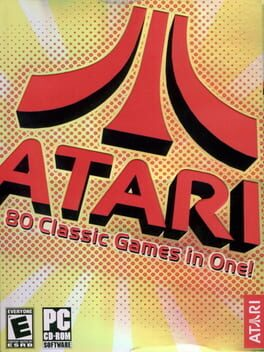
▲
1
▼
Atari: 80 Classic Games in One! contains two unused ROMs created to test the emulators used in the compilation. Interestingly, the .txt file that contains the descriptions of all the featured games also has explanations of what these ROMs are, suggesting that they may have at one point been planned to be included as bonus content on the compilation for regular players:
"[colours]
What is this?
This ROM was created as part of the development
process for ^RAtari 80 Classic Games^0[sic]. This ROM
was transferred into a genuine first generation
Atari 2600 (bought by the lead programmer's
family back in 1977!) via a Cuttlecart. It cycles
through all the available colours in the Atari
2600 palette, displaying the colour's number as a
binary "bar code" at the top. The output of the
Atari 2600 was hooked up to a video capture card,
and each frame was digitised and its colour ID
determined by reading the bar code on the image.
All frames of the same colour were then averaged
together to get an average "RGB" colour value for
that number. This process was used to get accu-
rate colour matches with the original Atari 2600.
[sound]
What is this?
This ROM was created as part of the development
process for ^RAtari 80 Classic Games^0[sic]. This
ROM was transferred into a genuine first gener-
ation Atari 2600 (bought by the lead programmer's
family back in 1977!) via a Cuttlecart. It plays
a sound sequence consisting of a one second low-
volume beep, 1 second of silence, and then 4
seconds of a particular Atari 2600 "voice",
followed by another 1 second of silence. Each of
the available voices is played in turn at a
preset frequency. (Once all voices were played,
the frequency would change and the process would
repeat.) The output was captured via a PC's
^G(more...)
Page 2
^G(...more)
sound card and a program found the sound's
fundamental pattern. These captures were used
to generate accurate sound matches with the
Atari 2600.
Note: The left difficulty must be in the B
position for the sounds to start."
What is this?
This ROM was created as part of the development
process for ^RAtari 80 Classic Games^0[sic]. This ROM
was transferred into a genuine first generation
Atari 2600 (bought by the lead programmer's
family back in 1977!) via a Cuttlecart. It cycles
through all the available colours in the Atari
2600 palette, displaying the colour's number as a
binary "bar code" at the top. The output of the
Atari 2600 was hooked up to a video capture card,
and each frame was digitised and its colour ID
determined by reading the bar code on the image.
All frames of the same colour were then averaged
together to get an average "RGB" colour value for
that number. This process was used to get accu-
rate colour matches with the original Atari 2600.
[sound]
What is this?
This ROM was created as part of the development
process for ^RAtari 80 Classic Games^0[sic]. This
ROM was transferred into a genuine first gener-
ation Atari 2600 (bought by the lead programmer's
family back in 1977!) via a Cuttlecart. It plays
a sound sequence consisting of a one second low-
volume beep, 1 second of silence, and then 4
seconds of a particular Atari 2600 "voice",
followed by another 1 second of silence. Each of
the available voices is played in turn at a
preset frequency. (Once all voices were played,
the frequency would change and the process would
repeat.) The output was captured via a PC's
^G(more...)
Page 2
^G(...more)
sound card and a program found the sound's
fundamental pattern. These captures were used
to generate accurate sound matches with the
Atari 2600.
Note: The left difficulty must be in the B
position for the sounds to start."

subdirectory_arrow_right Warbirds (Game)
▲
2
▼
Franchise: Super Smash Bros.
subdirectory_arrow_right Splatoon (Franchise)
▲
1
▼
On October 24, 2023, Nintendo released a list of "Community Guidelines" for eSports events surrounding their games in Europe and Japan - these rules received major backlash from competitive Smash and Splatoon players and were theorized as being intended to directly stifle Nintendo's competitive communities. With particular criticism going towards:
• Enforcing a maximum player count of 200 per day for in-person tournaments
• Enforcing a cash prize maximum at £9,000 / €10,000 and prohibiting sponsors from funding events
• pre-Switch games (particularly Super Smash Bros. Melee and Super Smash Bros.) not being available for licensing
• Not allowing titles from Nintendo's games to be used in branding, even including shortened variants such as "Splat" or "Smash".
• Banning modified, emulated, or fan-made games - the prior two being essential parts of modern day competitive Melee.
• Food, drink, and merchandise sale being banned from venues
• Arguably most damningly, requiring official licensing for smaller-scale high school charity events.
• Enforcing a maximum player count of 200 per day for in-person tournaments
• Enforcing a cash prize maximum at £9,000 / €10,000 and prohibiting sponsors from funding events
• pre-Switch games (particularly Super Smash Bros. Melee and Super Smash Bros.) not being available for licensing
• Not allowing titles from Nintendo's games to be used in branding, even including shortened variants such as "Splat" or "Smash".
• Banning modified, emulated, or fan-made games - the prior two being essential parts of modern day competitive Melee.
• Food, drink, and merchandise sale being banned from venues
• Arguably most damningly, requiring official licensing for smaller-scale high school charity events.
Community guidelines:
https://www.nintendo.co.uk/Legal-information/Community-Tournament-Guidelines-2467744.html
Licensing signup without any non-Switch games:
https://twitter.com/DarkGenex/status/1716834246336389485
https://www.nintendo.co.uk/Legal-information/Community-Tournament-Guidelines-2467744.html
Licensing signup without any non-Switch games:
https://twitter.com/DarkGenex/status/1716834246336389485
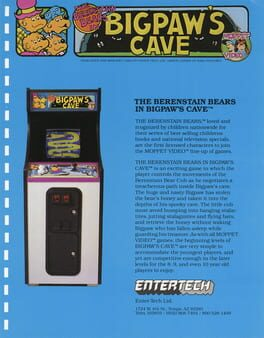
▲
1
▼
 Owing to its elusive rarity, obscurity, and existence within the very small collector niche of pre-school entertainment, Berenstain Bears in Big Paw's Cave has not been properly archived for emulators. Every piece of video footage of the game online shows the game as taking place on a black background, giving it a resemblance to games from much earlier points in arcade history, while the flyer for the game shows a much more colorful backdrop with more details.
Owing to its elusive rarity, obscurity, and existence within the very small collector niche of pre-school entertainment, Berenstain Bears in Big Paw's Cave has not been properly archived for emulators. Every piece of video footage of the game online shows the game as taking place on a black background, giving it a resemblance to games from much earlier points in arcade history, while the flyer for the game shows a much more colorful backdrop with more details.
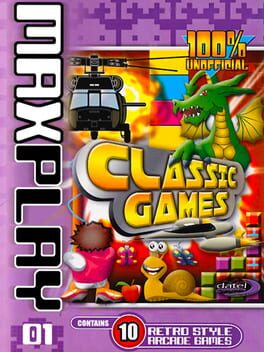
▲
2
▼
In the PS2 version of MaxPlay Classic Games Volume 1, you can find a full pirated copy of Metroid Fusion in the folder "DELETE_ME". It was likely used to test the compilation's emulator.
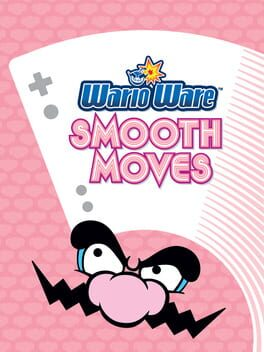
▲
1
▼
 The background of the Punch-Out!! microgame is a screenshot taken in an unofficial Japanese emulator known as VirtuaNES, as can be noted by a Windows 9X window framing the background. This window is covered by an illustration of a television in the game.
The background of the Punch-Out!! microgame is a screenshot taken in an unofficial Japanese emulator known as VirtuaNES, as can be noted by a Windows 9X window framing the background. This window is covered by an illustration of a television in the game.
Franchise: Pokémon
▲
1
▼
 All three games in the Pokémon Stadium series contain the Game Boy Tower, a feature that allows the player to play the mainline Pokémon games from Generations I and II on the Nintendo 64 through a Transfer Pak. This is achieved through running a modified, emulated version of the Super Game Boy 2 BIOS within the data for the Pokémon Stadium games. Through the use of hacks, it is possible to make the Game Boy Tower run other Game Boy and Game Boy Color games as if on a Super Game Boy 2, complete with custom borders and palettes for titles that support such features. However, saving is disabled due to the Pokémon Stadium games not being equipped to run these cartridges in the normal course of play.
All three games in the Pokémon Stadium series contain the Game Boy Tower, a feature that allows the player to play the mainline Pokémon games from Generations I and II on the Nintendo 64 through a Transfer Pak. This is achieved through running a modified, emulated version of the Super Game Boy 2 BIOS within the data for the Pokémon Stadium games. Through the use of hacks, it is possible to make the Game Boy Tower run other Game Boy and Game Boy Color games as if on a Super Game Boy 2, complete with custom borders and palettes for titles that support such features. However, saving is disabled due to the Pokémon Stadium games not being equipped to run these cartridges in the normal course of play.
Demonstrations of hacked Game Boy games through Pokémom Stadium emulator:
https://www.youtube.com/watch?v=cB9jr4lOOvw
https://www.youtube.com/watch?v=As0v0hNBgAw
https://www.youtube.com/watch?v=cB9jr4lOOvw
https://www.youtube.com/watch?v=As0v0hNBgAw

▲
1
▼
 Prior to the start of 2017, there were 976 known Banana Coins in the game. In early January of that year, a speedrunner discovered a widely undocumented 5-Banana Coin hidden in Fungi Forest while looking at how the game formats its save data. While looking through the stage's flags in the BizHawk emulator, the speedrunner noticed that the flag for 5-Banana Coins was incomplete, and used script analysis tools to reveal a DK Dirt Pile hidden under tall grass located near the Tag Barrel by the exit to the Chunky Minecart. Walking over the pile would cause the player to slightly bob upwards from the grass in an easy-to-miss moment, and slamming it revealed the 5-Banana Coin, bringing the known total to 977 Banana Coins.
Prior to the start of 2017, there were 976 known Banana Coins in the game. In early January of that year, a speedrunner discovered a widely undocumented 5-Banana Coin hidden in Fungi Forest while looking at how the game formats its save data. While looking through the stage's flags in the BizHawk emulator, the speedrunner noticed that the flag for 5-Banana Coins was incomplete, and used script analysis tools to reveal a DK Dirt Pile hidden under tall grass located near the Tag Barrel by the exit to the Chunky Minecart. Walking over the pile would cause the player to slightly bob upwards from the grass in an easy-to-miss moment, and slamming it revealed the 5-Banana Coin, bringing the known total to 977 Banana Coins.

subdirectory_arrow_right Pokémon Sapphire Version (Game)
▲
1
▼
In May 2020, a Japanese livestreamer began a lengthy series using his two pet Siamese fighting fish to play through Pokemon Ruby & Sapphire using a system involving several programs connected to the game's emulator. These programs rely on a webcam to track the fish's movements and determine what actions to perform by where it swims over a map placed behind the fish tank, so wherever the fish swims, it blocks a map square with a picture of a controller input on it and the system performs said input in-game.
On October 3, 2020, during a stream playing through Pokemon Sapphire, one of the fish named Mutekimaru was working on a boulder puzzle in the Seafloor Cavern on Route 128 when it performed a glitch that appeared to have not been widely known in the past. The fish used Strength on a boulder, which moved it and additionally created a duplicate boulder in its place, soft-locking the puzzle until the room is reset. The streamer later figured out how to trigger the glitch himself, and uploaded a step-by-step guide to YouTube on how to perform it.
On October 3, 2020, during a stream playing through Pokemon Sapphire, one of the fish named Mutekimaru was working on a boulder puzzle in the Seafloor Cavern on Route 128 when it performed a glitch that appeared to have not been widely known in the past. The fish used Strength on a boulder, which moved it and additionally created a duplicate boulder in its place, soft-locking the puzzle until the room is reset. The streamer later figured out how to trigger the glitch himself, and uploaded a step-by-step guide to YouTube on how to perform it.
| keyboard_double_arrow_leftFirst keyboard_arrow_leftPrev | Page 1 of 2 | Nextkeyboard_arrow_right Lastkeyboard_double_arrow_right |
